A Marketing an Analysis of Freespirit Retail Outlet
Retail Marketing
Assignment 2: Case study project

1. Purpose of this Report
The purpose of this consultancy report is to conduct a formal marketing analysis into the way that Freespirit markets its business and to provide recommendations for how the company can improve its profitability. In particular, the report will focus on the following issues:
- Evaluation of the idea of a website as a possible source of additional sales for the business
- Evaluation of the suitability of the current site and whether relocation is justified
- Analysis of target market and catchment area
- Analysis of the company’s current retail marketing activities in the context of creating a competitive advantage
- Providing recommendations in the form of a retail marketing plan
2. Introduction
2.1. Freespirit
Freespirit is a chain of retailers selling surf, skate and snowboarding clothing, footwear and equipment. It sells clothes, shoes, belts, hats and other accessories by brands such as Vans, O’Neill, Animal, Quiksilver and Billabong. There are currently 30 Freespirit branches in the UK, catering for young, active and fashion-conscious men and women. Its website (www.thefreespirit.co.uk) states that it provides ‘cutting edge fashion for those who like to board, surf and ski’. Freespirit is part of the Blacks Leisure Group which also owns the retail outlets: Millets, Blacks and Just Add Water. It is the exclusive distributor of the O’Neill brand. The Northampton branch of Freespirit is located at 27 The Drapery (see figure 1).
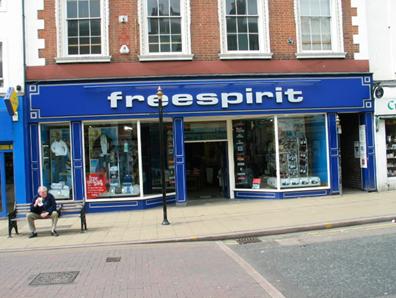
FIGURE 1 – Shop exterior
2.2. The Current State of the Retail Industry
As we move into the new century, retail spending in the UK has reached approximately €300bn, accounting for a third of customer spending and 20% of total GDP. Some 2.5 million people are employed in retail, accounting for 7% of our total workforce, working in about 320,000 shops (Jones & Murphy, 2003).
According to Gilbert (2003), ‘. . .it is often stated that the only constant in retailing is change and it is certainly true that the pace of development within retailing is accelerating. More than at any other period before, we are witnessing the emergence of new forms of retailing, in part as a response to demand from increasingly sophisticated consumers’. The market is becoming more segmented with retailers focusing on niche markets and therefore companies have to respond to these changes accordingly if they are not to be left behind.
2.3. The Future of Retail
Gilbert (2003) identified a number of factors that will determine the future of retail. Slow population growth combined with less available time for conventional shopping is producing changing patterns of demand. In the UK, the youth market has declined dramatically, while the number of students has almost doubled to 1.2 million. Change will take place in relation to the pressures and trends in the macro- and micro-environments of retail organisations, and organisations will need to ensure that they have strategies which will relate to changes in consumer demand, social trends, government legislation, improvements in technology and competitor actions.
3. Web Presence
Sullivan & Adcock (2002) identified a number of positive and negative aspects of the development of online retailing. One benefit is that it is convenient, flexible, offers significant operational and financial benefits for the retailer and can be tailored to individual shopper’s requirements. Some of the negative aspects are that delivery can be a problem, hidden costs for the retailer can be high, social contact is largely absent, physical contact with the products is impossible, browsing and impulse purchases are harder to encourage, payment can be an issue, instant gratification is not the norm and the ability of the retailer to influence shoppers may be more limited.
Freespirit already has a website (www.thefreespirit.co.uk), but it is of very little use with regards to creating additional sales for the business. The presentation is good, but it is of minimal use in a marketing sense. The site presents the logos of the brands sold and a list of store addresses and telephone numbers. If users hover the computer mouse on the store name, they are led to believe that they will be given further information on that particular store, but clicking proves fruitless and frustrating.
Another problem that needs to be addressed is that there is no mention of the website in any of the company’s literature, promotions or on the shop premises (as can be seen in figures 2 & 3).
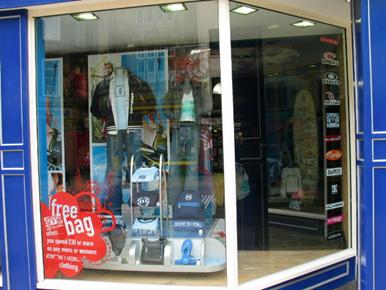
FIGURE 2 – Shop display (left hand side)
If there is no mention of the website, customers are likely to assume there is no website at all and therefore the company will lose out on potential visitors to the site. Putting the website address in the window display and on all leaflets, adverts and carrier bags will cost the company virtually nothing and will help to raise the profile of the Freespirit brand name as well as directing visitors to its website.
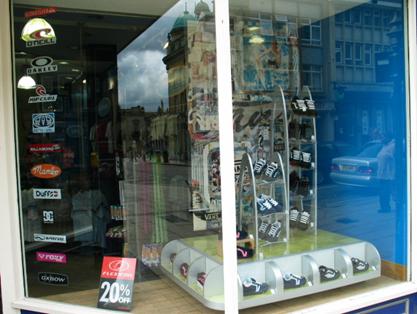
FIGURE 3 – Shop display (right hand side)
Another problem with Freespirit’s current web presence is that the website is very hard to find. Typing ‘Freespirit’ into the internet search engines, Google and Altavista, only brings the website up as the 9th and 14th result respectively. This is unusual for a UK High Street retailer. Also, it does little for the image of the shop when the search results are behind nudist resorts and psychic chat websites, for example.
The website address is also confusing. It is called www.thefreespirit.co.uk, yet the actual name of the shop does not include the article ‘the’; it is called Freespirit. This probably occurred because more suitable domain names such as www.freespirit.com or www.freespirit.co.uk were already taken when the business was formed. However, if the company is serious about utilising the benefits of a website to increase sales, it should consider buying the rights to the domain name from its current owners or, at the very least, advertise the current web address better.
Newman & Cullen (2002) reported that ‘internet home shopping is being developed by many of the leading multiples in the clothing sector in that it complements rather than competes with conventional store trading’. Berman & Thelen (2004) agree that a multi-channel approach can be beneficial to retailers. They state that the advantages of adopting such an approach include enabling the retailer to select from among multiple channels based on their unique strengths and profit making opportunities through appealing to multi-channel consumers. Store-based transactions allow the customer to feel, smell, try out or try on the product. Therefore, for Freespirit, this is the most useful case because of the clothing it sells. The web offers an interactive format, high quality graphics and virtually unlimited space to describe the item. Therefore the initial emphasis on the Freespirit website should be on the accessories it sells, such as frisbees, kites and jewellery. It should, however, also include its clothing ranges on the website for people who are aware of the brands it sells and for those who might browse the website before coming into the shop to try on and purchase an item.
Its is clear that Freespirit could benefit from a website which gives more details on the clothes and accessories it sells and also gives the consumer the opportunity to purchase online. Newman & Cullen (2002) suggested that a typical online ordering system works as follows:
- STAGE 1: Accept the order
- STAGE 2: Validate the customer
- STAGE 3: Wait until stock is present or with the supplier
- STAGE 4: If stock is present, attempt to process the payment
- STAGE 5: If payment is correct, produce the delivery note or direct shipment purchase order
- STAGE 6: Pack & ship to the customer
It is recommended that the company adopt a system similar to the above.
4. Site Location
McGoldrick (1990) commented that ‘store location decisions are frequently considered to be the single most important elements of retail marketing. Although a good store location is unlikely in itself to compensate for mediocre overall strategy, a poor location can be a deficit that is very difficult to overcome’. Therefore it is important in this section to assess the suitability of Freespirit’s current site and consider whether it would be beneficial to relocate to another part of town.
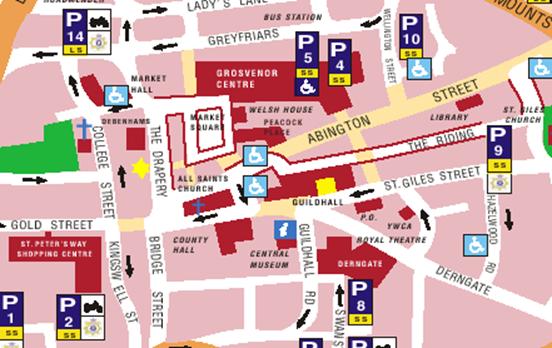
FIGURE 4 – Current location of Freespirit (marked with a yellow star)
4.1. Analysis of Current Location
There are advantages and disadvantages of Freespirit’s current store location. Firstly, it is central to where the main shopping activities take place. A great advantage is that it is located very close to Mayorhold multi-storey car park (marked 14 in Figure 4). Parking availability in the close vicinity of the shop makes it a lot easier to visit the shop. However, it could be argued that the Grosvenor and Greyfriars multi-storey car parks (marked 4 and 5 in Figure 4) are more suitable for shoppers as are they are located even more centrally and are incorporated into the Grosvenor shopping centre complex. If shoppers park here, it is a slightly longer walk to Freespirit, but is still relatively close.
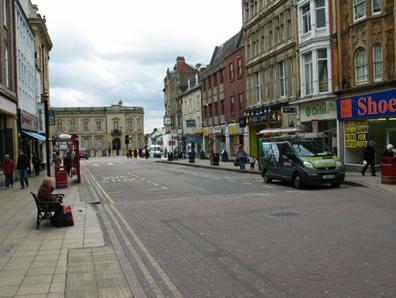
FIGURE 5 – View of the left of Freespirit from the opposite side of road
Another advantage of the current location is the surroundings. As most of the main bus stops (excluding Greyfriars bus station) are located along the Drapery (see figures 5 & 6) it is very accessible to people who use public transport. This is vitally important as it means that Freespirit is potentially one of the first stores a shopper will come to if travelling by bus. Another important factor when assessing the suitability of this site is that there are no direct competitors along this street. Freespirit’s main competitor, Roxy Life, is situated in the Grosvenor centre and the only other shop that could be considered direct competition is Spun Out which is situated at the bottom of Gold Street. There are clothing stores along the Drapery, such as Heroes, Debenhams and Circus, but these cater more for mainstream fashion. This could be an advantage as Freespirit can try to lure the competition’s customer base to its shop.
However, there is a potential disadvantage of being so close to the public transport stops. A large number of double-decker buses pass the shop and stop nearby. They certainly hide the shop from the view of people on the opposite side of the road. Although this may seem to be a minor point, it needs to be taken into consideration.
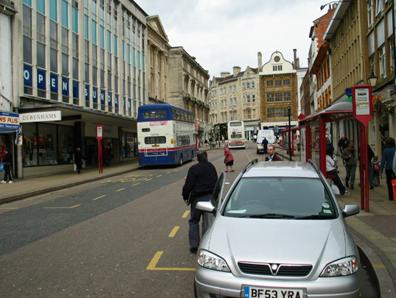
FIGURE 6 – View to the right of Freespirit from the opposite side of the road
4.2. Relocation Considerations
If the company were to relocate to any other part of the town centre, the Grosvenor centre is likely to be the most attractive option. McClurg-Welland (2005) has discussed plans to double the size of the centre, at a cost of £200 million. The intention is to transform the centre into a shopping area to rival nearby Milton Keynes. Once the new centre is opened, it would be an attractive area in which to be located since the centre is likely to attract customers from much further afield. However, an expansion of this magnitude will take many years. In the short term, it would be harmful to sales to be caught up in the chaos of such large scale construction, although perhaps more rewarding in the long term. Another negative factor is that most available outlets in the centre are considerably smaller than the present site. The current stock, which offers a competitive advantage over Roxy Life, would have to be reduced.
Before Freespirit considers a possible move to the Grosvenor centre, it is important to consider another regeneration scheme which is being planned for the near future. Plans are in place to regenerate the Market Square so that it becomes the focal point of the town centre once more. This adds weight to the argument against moving. This regeneration scheme is likely to create a spill-over effect of customers due to the shop’s close proximity to the Market Square. Conversely, such a regeneration scheme might take the customers away from the Drapery as they look to make use of the new facilities in the Market Square.
Gilbert (2003) proposed a retail location model which takes into consideration the issues of consumer behaviour (figure 7) and states that ‘a suitable location strategy needs to be underpinned by the type of merchandise and how time dependent the purchase may be’.
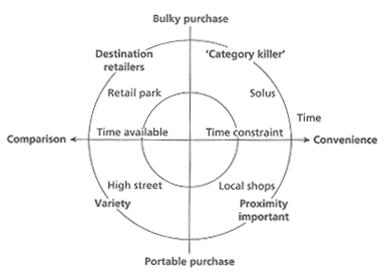
FIGURE 7: Retail Location and Consideration of Consumer Behaviour Proposed by Gilbert (2003)
The type of merchandise Freespirit sells is portable rather than bulky. With regards to time constraints, it can be considered to be more of a comparison shop than convenience as shoppers may browse in a number of shops before deciding on what to buy. This places Freespirit in the ‘variety’ category and suggests that the ideal location for the shop would be on the High Street, which it currently is.
5. Target Market and Catchment Area
5.1. Target Market
It is important that Freespirit has a good understanding of its target market if it is to satisfy its needs and wants. Gilbert (2003) stated that ’the fundamental starting point for the creation of a successful marketing-mix strategy is to ensure the target market is clearly defined’. There are many benefits of targeting. One is that the retailer gains a fuller understanding of the unique characteristics and needs of the group to be satisfied. Another is that the retailer gains a better understanding of its main competitors because it is possible to detect those retailers who have made a similar selection of target markets. Finally, targeting aids the understanding of the changes and development in the needs of the target market.
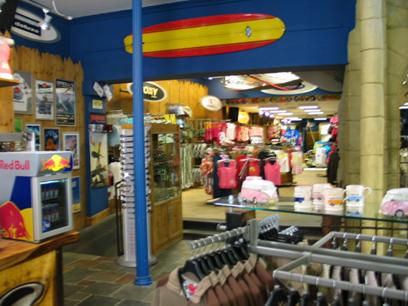
FIGURE 8: Freespirit interior
As mentioned earlier, Freespirit’s website states that it provides ‘cutting edge fashion for those who like to board, surf and ski’. The age range that it seems to be targeting is 16- to 30-year old males and females. These men and women will be young, energetic and active. This is reflected in the fact that it sells the energy drink Red Bull at the cash desk (see figure 8), something unusual for a clothes retailer. The target group is likely to be interested in skateboarding, snowboarding, skiing, surfing and other high adrenaline sports. The members of the group are likely to pursue an active lifestyle or at least admire such a way of life. They are likely to prefer alternative fashion and therefore, are unlikely to shop in mainstream fashion stores. They will be brand orientated but will prefer to be seen wearing alternative brands such as Vans and Converse rather than High Street labels as it says something about them as people. The brands give them an alternative identity and they are often associated with certain types of alternative music such as rock and metal. This contributes to the psychographic profile of the typical Freespirit customer.
5.2. Catchment Area
According to Newman & Cullen (2002) a retail catchment area is ‘the sphere of influence around a retail attraction from which the retailer is likely to draw customers’. Catchment area analysis can help to give a better understanding of who shops at Freespirit and how far they customers are willing to travel to shop there. William Riley originated ‘The Law of Retail Gravitation’ in 1925 which calculates what is known as the ‘breaking point’ – the point at which consumers will be attracted to one shopping area over an adjacent one. The breaking point formula is:
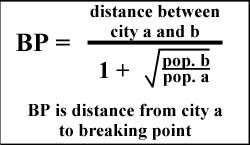
In Freespirit’s case, Milton Keynes is the closest town which arguably provides the biggest competitive threat. The population of Northampton (a) is 200,000 and the population of Milton Keynes (b) is 220,000. The distance between the two is 28 miles. Upon entering these figures into the formula, the breaking point of Northampton is 13.7 miles. Figure 9 is a pictorial representation of this:
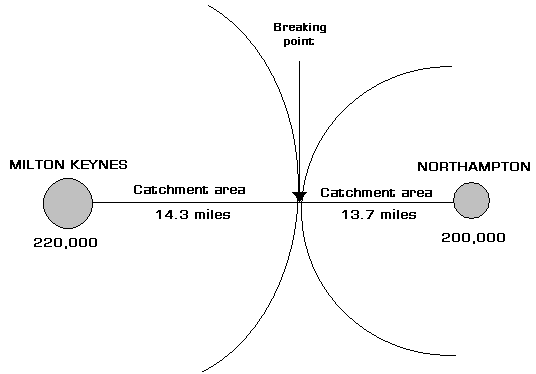
FIGURE 9: Reilly’s ‘breaking point’
McClurg-Welland (2005) estimated that the catchment percentages for the Northampton town centre are:
- 80% local people (3-5 mile radius)
- 10% outlying areas/Northants
- 5% visitors
- 5% weekday workers
This, with calculations using Reilly’s law, gives a basic understanding of the potential customer reach of Freespirit. With careful marketing planning, the company can attempt to increase this catchment area by targeting people around the breaking point zone. However, once the redevelopment of Northampton is completed, these catchment estimations are likely to change in Northampton’s favour as the area becomes more of a serious competitor to Milton Keynes.
6. Current Marketing Activities
6.1. Introduction to the Marketing Mix
Kotler et al (1999) defined the marketing-mix as ‘the set of controllable tactical marketing tools that the firm blends to produce the response it wants from the target market’. Gilbert (2003) suggests that the traditional marketing mix of the four Ps – Product, Price, Promotion and Place – are more suited to the manufacturing industry and that seven Ps are required to take into account the service aspect of retailing. Kent & Omar (2003) state that ‘all retail marketing-mix elements must be consistent with the expectations of the store’s target market’. The target market was identified in section 5.1; this section will assess whether Freespirit’s current marketing activities meet its expectations and in which areas Freespirit holds a competitive advantage.
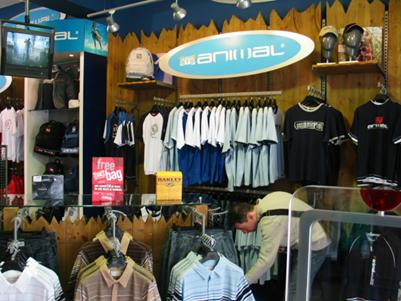
FIGURE 10: View from the entrance (front right of store)
6.2. Product
Freespirit stocks well-known surf, skate and ski brands. It does not sell anything under its own brand name. This matches the needs of its target market for which brand names are important.
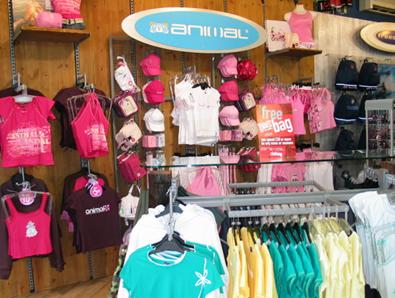
FIGURE 11: View from the entrance (front left of store)
Clothing is laid out clearly by brand, with women’s on the left and men’s on the right (see figures 10-14). All the brands sold are alternative brands that will not be found in mainstream fashion retailers such as Topshop and Miss Selfridge. The shop has a clear competitive advantage over its main competitors with regards to the range it has on offer. The brand names listed in the shop displays are testament to this (see figures 2 & 3). The size of the outlet means it can stock a lot more than can Roxy Life and Spun Out without cramping the store layout and flow.
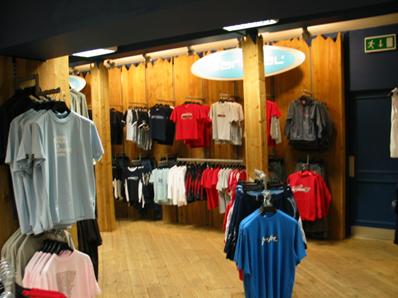
FIGURE 12: Back-right hand side of the store
6.3. Price
Prices are fairly high, due to the fact that all items are sold under a brand label. On the whole, Freespirit is no more expensive than its competitors. However since it does not manufacture anything under its own brand name, it does not offer lines that are considerably cheaper. This may be a slight deterrent for the price-conscious consumer. However, usually the typical Freespirit customer is looking for a brand name, which perhaps explains why the company has not invested in its own range. All the products are of high quality and it is the customer’s perceived value for money which is important rather than the individual price. They are probably willing to pay more for a brand name because the benefits from such brands are both tangible and intangible.
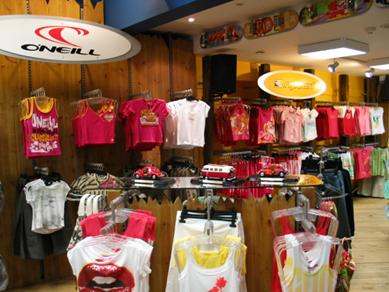
FIGURE 13: Middle-left hand side of the store
6.4. Promotion
Freespirit makes use of a variety of retail promotion tools. It periodically displays bus stop adverts depicting a man with a snowboard, modelling some of the clothes available and the address of the shop. This is good because people are directed to the shop which is located slightly out of the way for Grosvenor centre and Abington Street shoppers. As the target market is brand orientated, it may be even better if the brands sold were shown on the advert, especially as the target market is brand orientated.
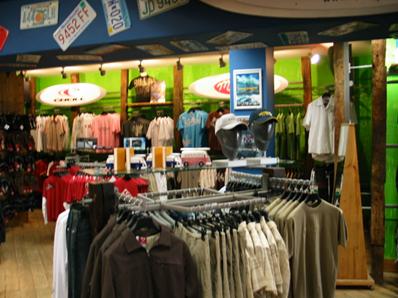
FIGURE 14: Middle-right hand side of the store
Freespirit also has sales promotions which are clearly indicated at points around the store and in the window display (figures 2, 3, 10 & 11). Customers get a free bag when they spend £30 on the Animal brand and another promotion offers 20% off the Flexifoil brand. These promotions are likely to give Freespirit a competitive advantage over shops that don’t stock what is being promoted, especially if the customer is brand loyal. These promotions could be the difference between someone buying what they want from Freespirit or from Roxy Life, for example.
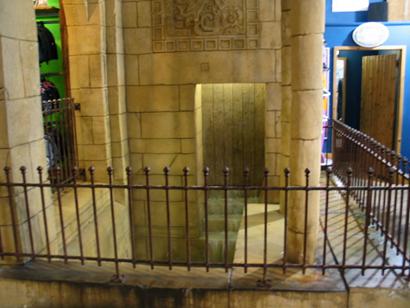
FIGURE 15: Fountain (off)
6.5. Place
Location is a very important aspect of ‘place’ (see section 4). Distribution channels are also very important; good channels make the product easily accessible. At the moment, the only way a customer can buy from Freespirit is to go to a branch..This works well for the company because its location is adequate for the type of items it sells. However, since most of Freespirit’s product lines are fairly portable, the company should investigate the possibility of mail order and/or internet trading, which could be successful. This is a clear opportunity to gain a competitive advantage as neither Roxy Life nor Spun Out has yet developed the use of mail orders or their websites as distribution channels.
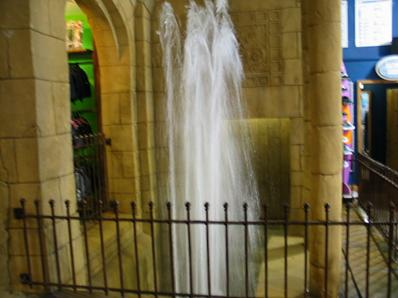
FIGURE 16: Fountain (on)
6.6. People
The staff of Freespirit does not wear a uniform. They wear casual clothes which can be found in the store. They wear a tag around their necks to identify them as staff members. This works well because the customers find it easy to relate to them. The staff members’ approach is informal and friendly; they tend to use informal language that the customer understands and uses. The combination of language and dress allows the customer to trust staff members more who appear to be knowledgeable about the product range.
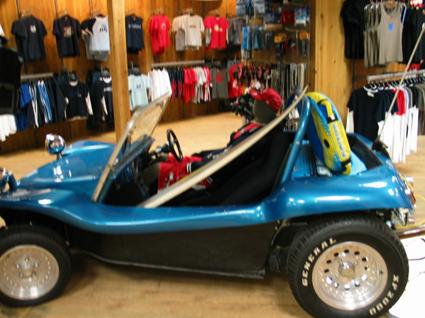
FIGURE 17: Beach buggy
6.7. Physical Evidence
The layout of the store works well. Firstly, women’s clothes are set out on the left hand side of the store and men’s on the right. In the centre of the store there is a fountain which sprays up every minute or so (see figures 15 & 16). This is a brilliant feature as it draws curious customers to the middle of the store, thus leading them to the back of the shop where further clothing and shoes can be found. Although the noise may irritate customers and customers who stand too close may get splashed, the fountain adds character to the store and fits in with the active/outdoors/watersports image that the company has adopted. There is also a genuine beach buggy near the back of the store (see figure 17) which has the same effect as the fountain in guiding and enticing customers through the store.
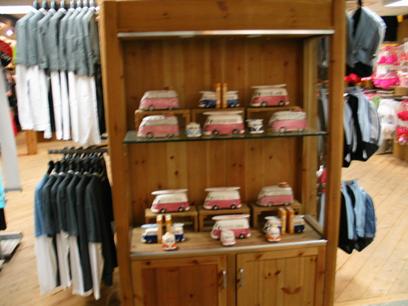
FIGURE 17: Replica Volkswagen camper vans
Small, china replica Volkswagen camper vans are available at the back of the store. Although these are a surprising product to find in the store, they help to add to the image of the shop, as the camper van is a classic symbol of the typical surfer. How many of these get sold is probably irrelevant to the store manager; they are there to enhance the feel and image of the shop. The same is achieved by the use of music. Alternative rock is played, a genre which is closely associated with the lifestyles of the target market. (Vans, one of the brands stocked, sponsors a worldwide touring punk rock festival called the Warped Tour which is highly regarded amongst listeners of this kind of music). Additional aspects of physical evidence can be found in appendix II.
6.8. Process
Freespirit has the normal 30-day money-back option for customers and the staff seems to be amenable to giving refunds. This, again, fits in with the laid back/relaxed image the company is trying to create and fits in with the lifestyle approach of the typical customer. The process for purchasing is much like any other clothes shop. The items are mainly on hangers, thus easy for the customer to inspect; there are changing rooms to try clothes on (these are unmanned, again, fitting in with the informal, laid back image) and the till point is easy to locate once the customer has decided on the purchase. The general approach by the company is that customers will not be pestered or harassed into making a purchase yet will always be helped, if so required.
7. Conclusion and recommendations
Freespirit has many positive aspects of which to be proud, but there are also a few areas in which it needs to improve in order to gain competitive advantage over close competitors such as Roxy Life and Spun Out.
7.1. PEST Analysis
A PEST analysis is useful for highlighting where the company stands now and the general state of the market.
7.1.1. Political
- Local authorities have the final say on what regeneration schemes take place
- Sunday trading is restricted
7.1.2. Economic
- Increased fuel costs for car users travelling into town
- Minimum wage increase
- Consumer spending – reliance on credit cards
7.1.3. Social
- Fashion trends – Freespirit is not associated with mainstream fashion
- Consumer values e.g. expected to refund items more easily than in the past
- Ageing population
- Consumers expect better service from retailers due to proliferation of traders, including online competition
7.1.4. Technological
- Rise of internet trading
- In store innovations e.g. self-scanning
7.2 SWOT Analysis
A SWOT analysis is a useful way of summing up the findings of this report with regards to what Freespirit is good at and what areas it needs to improve in.
7.2.1. Strengths
- Relatively good location (geographically and also with regards to size)
- Good public transport links
- Nationally recognised brand name
- Good understanding of target market
- Unique store interior
- Biggest range of alternative clothing in the town centre
- Staff have the right image for the type of shop Freespirit is, and are helpful
7.2.2. Weaknesses
- Poor website (content and accessibility)
- Nothing sold under the Freespirit brand name
- No cheaper line of clothing/accessories for less affluent customers
- No street parking allowed along the Drapery
7.2.3. Opportunities
- Selling stock via mail order
- Selling stock via website
- Increasing catchment area by targeting fringe areas
- Regeneration of the Market Square and Grosvenor centre (could bring more customers to the town)
7.2.4. Threats
- Competition, especially Roxy Life who are arguably in a better location
- Regeneration of the Market Square and Grosvenor centre (could take the emphasis away from the current location resulting in loss of custom)
- Milton Keynes – bigger urban area, has more to offer in the alternative clothes market and carries out more regional advertising
7.3 Objectives
In light of the above, it is recommended that Freespirit aim to achieve the following objectives:
- Development of the website so that customers can purchase products online. Most of the stock should be made available online; an exception should be made of the larger items which would be expensive and difficult to post to the customer. The website should be up and running and fully operational within six months. All company literature and carrier bags should carry the website address. The address should also be advertised in the shop window.
- To be the leading provider of alternative clothing in Northampton within a year. The location and premises are ideal for this and the range on offer is large and varied. The development of the website will aid this as none of the close competitors have utilised this at present. Advertising and direct mail campaigns should be directed to people living on the fringes of the catchment area zones in order to persuade them to come to Freespirit instead of Milton Keynes.
[Word count: 3,793]
7. Appendix I – Detailed map of Northampton
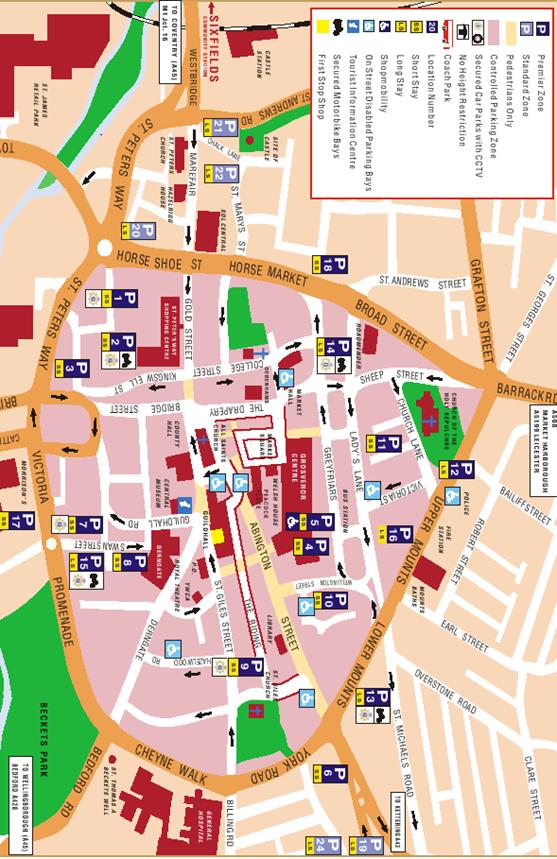
7. Appendix II – Photographs from the store interior
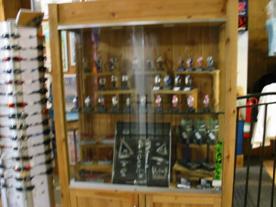
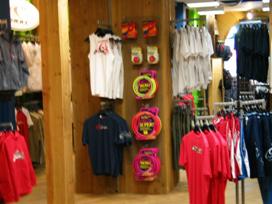
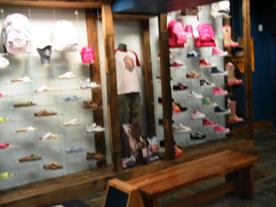
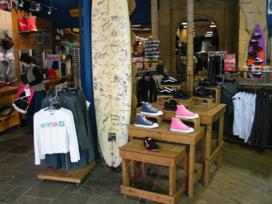
8. References
Berman, B. & Thelen, S., (2004), A guide to developing and managing a well-integrated multi-channel retail strategy. International Journal of Retail & Distribution Management,. 32 (2), p. 147-56
Gilbert, D., (2003), Retail Marketing Management. 2nd Ed. London: Prentice Hall.
http://geography.about.com/cs/citiesurbangeo/a/aa041403a.htm [online] [Accessed 4th March 2005]
http://www.blacksleisure.co.uk/flash.htm [online] [Accessed 1st March 2005]
http://www.mkweb.co.uk/statistics/documents/Population_Bulletin_2004-5.pdf [online] [Accessed 4th March 2005]
http://www.northampton.gov.uk/[online] [Accessed 4th March 2005]
http://www.thefreespirit.co.uk/ [online] [Accessed 1st March 2005]
Jones, R. & Murphy, D., (2003), Retail Therapy: Making Strategic Relationships Work. Basingstoke: Palgrave MacMillan
Kent, T. & Omar, O., (2003), Retailing. Basingstoke: Palgrave MacMillan
Kotler, P., Armstrong, G., Saunders, J. & Wong, V., (1999), Principles Of Marketing. 2nd European Ed. Hemel Hempstead: Prentice Hall
McClurg-Welland, I., (2005), Northampton Town Centre – Opening A Business (seminar handout)
McGoldrick, P. J., (1990), Retail Marketing. Maidenhead: McGraw Hill
Newman, A. J. & Cullen, P., (2002), Retailing: Environment & Operations.
London: Thomson Learning
Sullivan, M. & Adcock, D., (2002), Retail Marketing. London: Thomson Learning